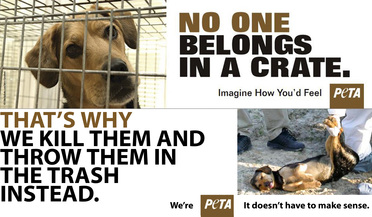When a beloved pet faces injury or illness, the emotional upheaval can be overwhelming. It’s a scenario that compels many pet owners to seek immediate assistance. In such tumultuous times, organizations like PETA and the ASPCA often come to mind as potential lifelines for the suffering pet. But the question lingers, will these organizations genuinely provide the help you need when your furry friend is in distress? To navigate through this discrepancy, it is vital to understand the roles, limitations, and operational strategies of both PETA and the ASPCA.
At first glance, the two organizations seem to share a common mission: the welfare of animals. PETA (People for the Ethical Treatment of Animals) is well-known for its provocative campaigns that focus on ethical treatment and vegetarianism, often using shock value to draw attention to animal rights issues. Meanwhile, the ASPCA (American Society for the Prevention of Cruelty to Animals) emphasizes the protection of animals from cruelty and the provision of services like adoption, rehabilitation, and protection for animals in distress. Their missions may appear aligned, yet the paths they tread differ significantly in terms of practical aid for injured pets.
To contextualize this difference, consider the nature of the assistance each organization offers. The ASPCA is more likely to take a proactive role in direct intervention. This includes operating shelters where pets can receive immediate care or sheltering during emergencies. This organization is often on the frontline, working directly in tandem with municipal authorities to address cases of animal abuse and neglect. In contrast, PETA largely functions as a grassroots movement with a focus on advocacy. Their strength lies in raising awareness about larger systemic issues like industrial agriculture and animal experimentation rather than providing direct veterinary assistance.
An important consideration for pet owners lies in the extent to which these organizations are equipped to handle pet injuries. The ASPCA’s veterinary services, including a veterinary emergency and critical care facility, provide an invaluable resource for injured pets. They advocate for direct medical intervention, and while there may be a financial implication, they offer a level of service that pets in critical health conditions desperately require. PETA, on the other hand, does not provide direct veterinary care. If your pet requires immediate medical attention following an accident or ailment, PETA is unlikely to be your best option, as their resources are not allocated towards medical services.
Moreover, another layer complicates the narrative: public perception. Due to their distinctive promotional methods, PETA often garners attention that sometimes overshadows their actual capacity to assist animals on an individual level. As such, when a pet owner suffers an emotional crisis due to their pet’s injury, the instinct may lead them to PETA out of indignation rather than logical assessment of resources. The visceral imagery and shocking campaigns employed by PETA can create a robust emotional response, but it is essential to scrutinize whether such fervor translates into practical outcomes.
In the unfortunate event of an animal injury, immediate action cannot be understated. Time becomes the most critical factor when treating injuries. Pet owners should look beyond the emblematic representations of organizations like PETA and consider where the most effective care can be acquired. This emphasizes the need for local veterinary services and animal hospitals. Pet owners must remain vigilant, keeping contact information for emergency services at the ready, as immediate access to skilled veterinarians is invaluable. Delaying treatment based on the hope for assistance from organizations that lack direct services might inadvertently exacerbate the injury.
The legal frameworks surrounding animal welfare also shape these organizations’ capabilities. A myriad of state laws for animal rescue and care establishes the jurisdictional limits within which PETA and the ASPCA operate. The ASPCA, for instance, has a more pronounced authority concerning animal control. They are empowered to investigate and intervene in local incidents of animal cruelty. Such jurisdiction elevates their credibility and capability to assist when your pet’s safety is at stake. PETA lacks the legal authority for such direct intervention; their influence is primarily ideological and educational.
One cannot dismiss the emotional aspect of seeking help during a crisis. Many pet owners resonate with the ideologies propagated by PETA. Their passionate advocacy for animal rights can draw pet owners to believe they could find support in dire situations. However, genuine emotional support is often found in community resources, veterinarians, or local animal welfare organizations rather than through large-scale advocacy groups. The juxtaposition of theoretical advocacy versus practical care increasingly becomes evident when analyzing these organizations holistically.
Ultimately, while both the ASPCA and PETA work towards animal welfare, their roles in critical situations like a pet injury differ tremendously. The ASPCA stands out as a proactive intermediary providing immediate assistance, while PETA acts as a voice for larger ethical discussions surrounding animal rights. In times of urgency, pet owners must prioritize immediate veterinary care and be judicious about who can deliver effective support. The camaraderie of local veterinary services, coupled with knowledge of local laws pertaining to animal welfare, remains fundamental in ensuring a pet receives the best possible care in moments of crisis.
To conclude, while both organizations play significant roles in the overarching narrative of animal welfare, they do not fulfill the same functions in a pet emergency. Awareness of their respective capacities can guide pet owners toward making informed decisions that ultimately aim for the welfare of their beloved companions. The immediate needs of injured pets are best served through direct action via veterinary professionals, better encapsulating the essence of animal care when time is of the essence.








